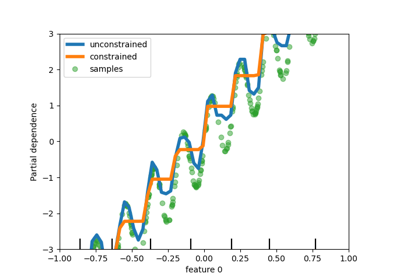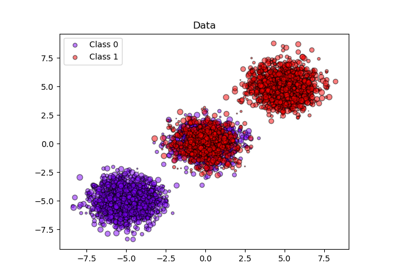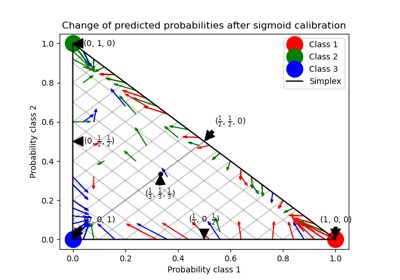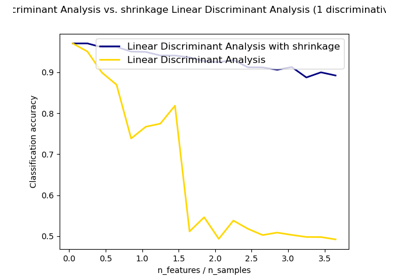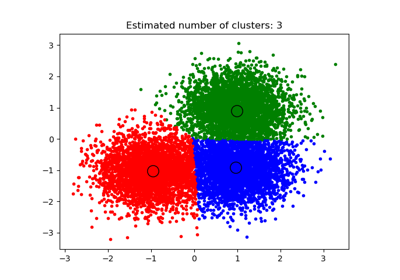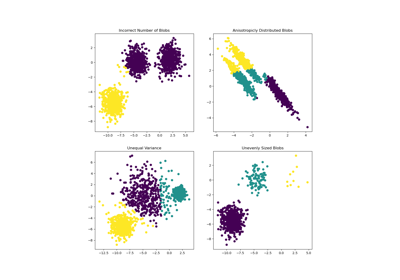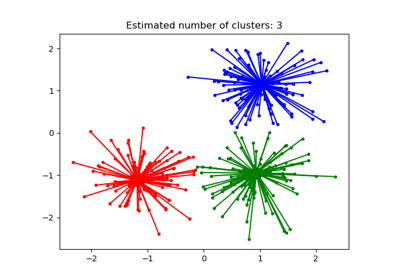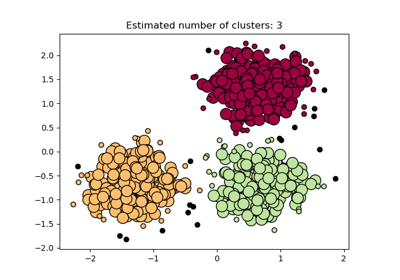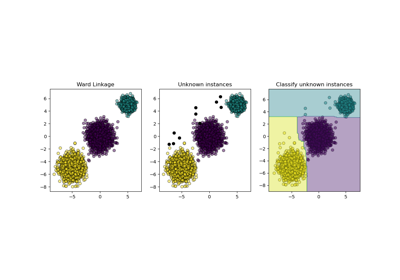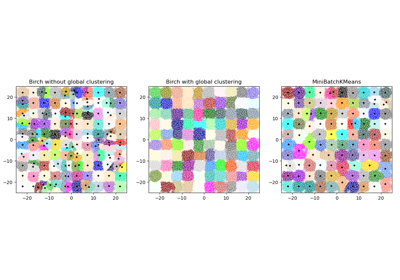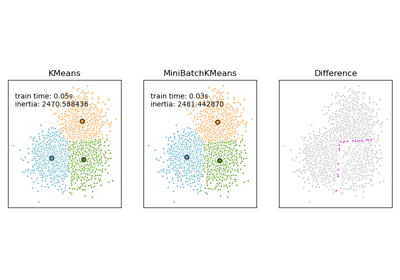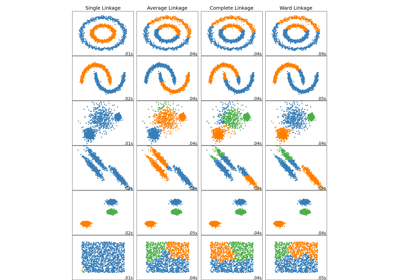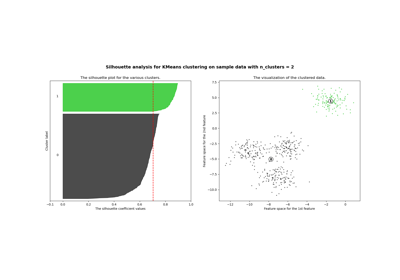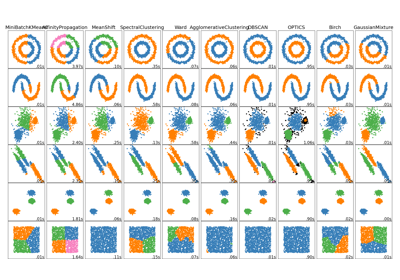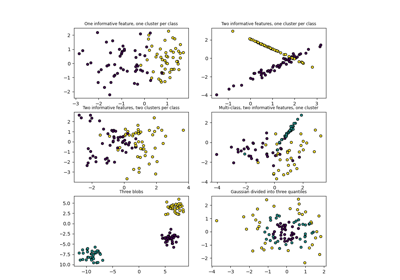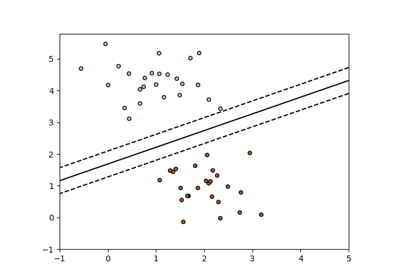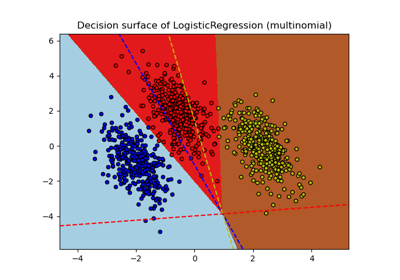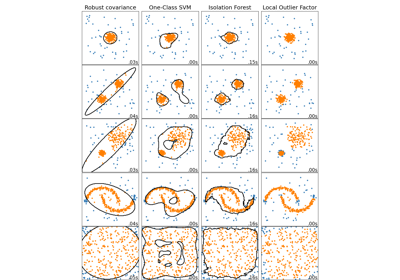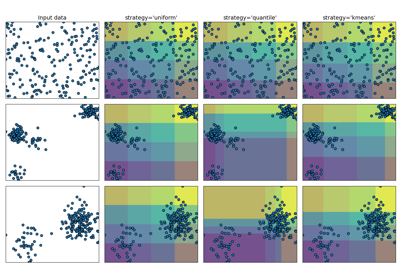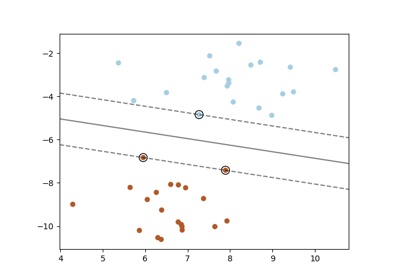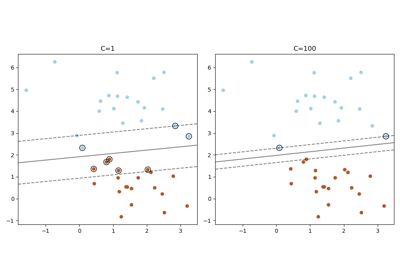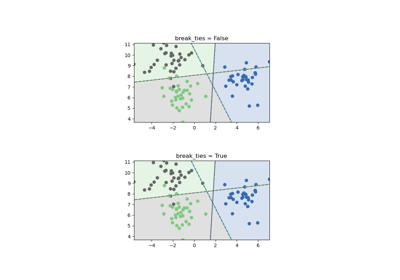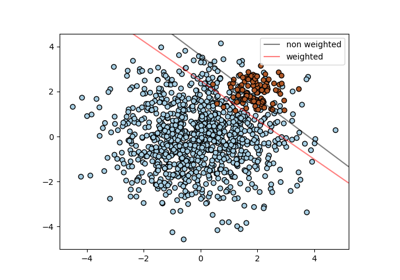sklearn.datasets.make_blobs¶
-
sklearn.datasets.make_blobs(n_samples=100, n_features=2, *, centers=None, cluster_std=1.0, center_box=(-10.0, 10.0), shuffle=True, random_state=None, return_centers=False)[source]¶ Generate isotropic Gaussian blobs for clustering.
Read more in the User Guide.
- Parameters
- n_samplesint or array-like, optional (default=100)
If int, it is the total number of points equally divided among clusters. If array-like, each element of the sequence indicates the number of samples per cluster.
Changed in version v0.20: one can now pass an array-like to the
n_samplesparameter- n_featuresint, optional (default=2)
The number of features for each sample.
- centersint or array of shape [n_centers, n_features], optional
(default=None) The number of centers to generate, or the fixed center locations. If n_samples is an int and centers is None, 3 centers are generated. If n_samples is array-like, centers must be either None or an array of length equal to the length of n_samples.
- cluster_stdfloat or sequence of floats, optional (default=1.0)
The standard deviation of the clusters.
- center_boxpair of floats (min, max), optional (default=(-10.0, 10.0))
The bounding box for each cluster center when centers are generated at random.
- shuffleboolean, optional (default=True)
Shuffle the samples.
- random_stateint, RandomState instance, default=None
Determines random number generation for dataset creation. Pass an int for reproducible output across multiple function calls. See Glossary.
- return_centersbool, optional (default=False)
If True, then return the centers of each cluster
New in version 0.23.
- Returns
- Xarray of shape [n_samples, n_features]
The generated samples.
- yarray of shape [n_samples]
The integer labels for cluster membership of each sample.
- centersarray, shape [n_centers, n_features]
The centers of each cluster. Only returned if
return_centers=True.
See also
make_classificationa more intricate variant
Examples
>>> from sklearn.datasets import make_blobs >>> X, y = make_blobs(n_samples=10, centers=3, n_features=2, ... random_state=0) >>> print(X.shape) (10, 2) >>> y array([0, 0, 1, 0, 2, 2, 2, 1, 1, 0]) >>> X, y = make_blobs(n_samples=[3, 3, 4], centers=None, n_features=2, ... random_state=0) >>> print(X.shape) (10, 2) >>> y array([0, 1, 2, 0, 2, 2, 2, 1, 1, 0])

